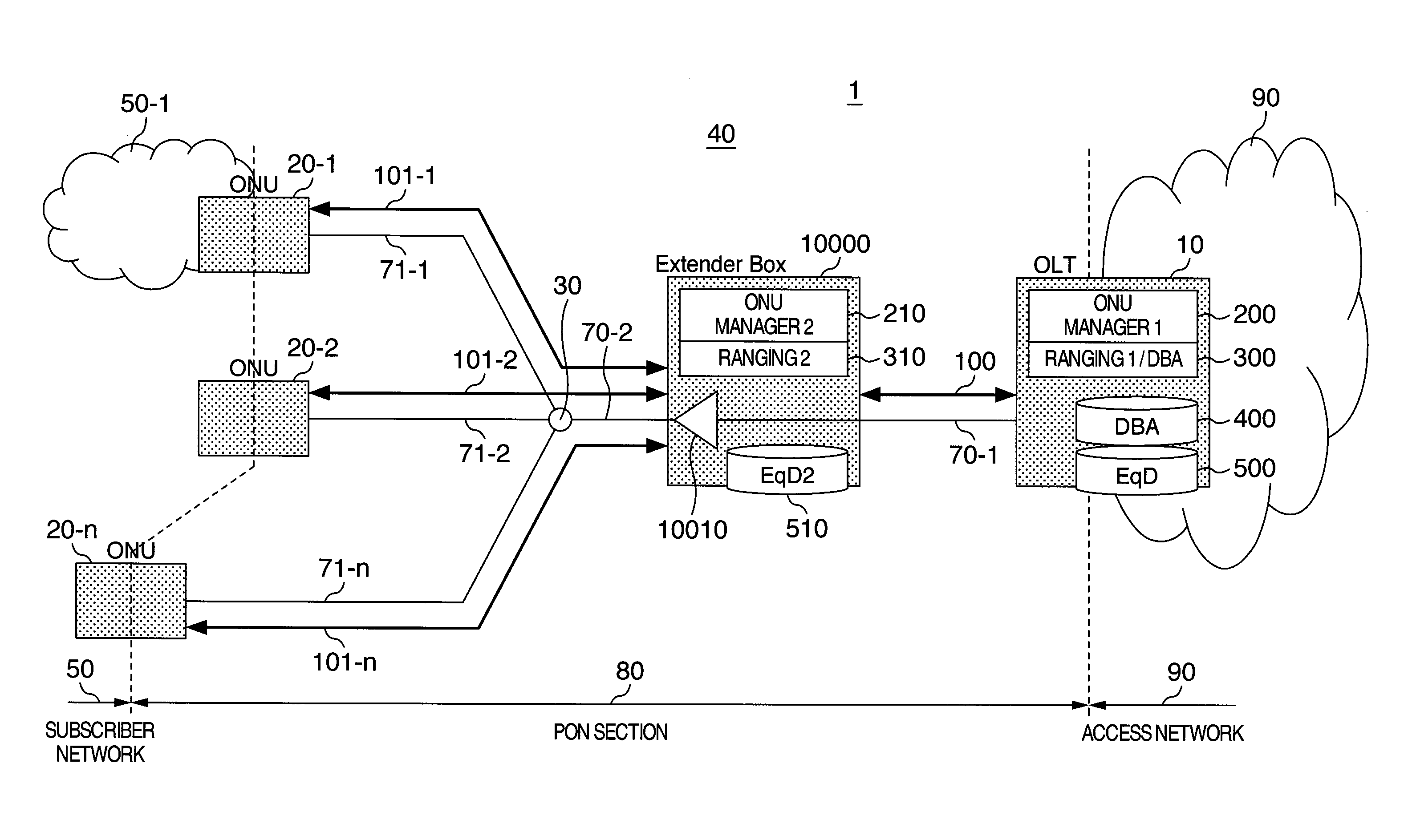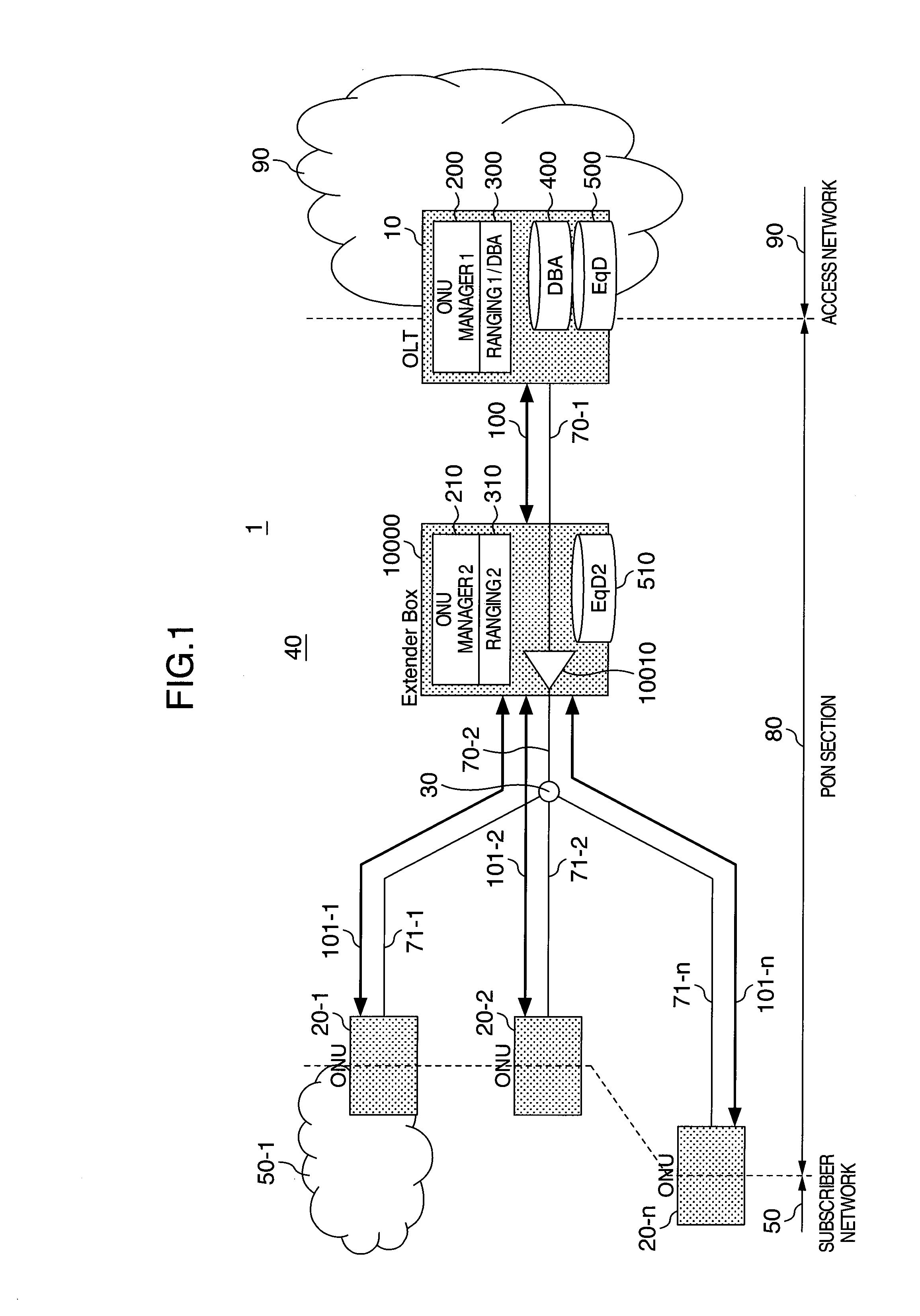Optical communication system and method for operating the same
a communication system and optical communication technology, applied in the field of optical communication systems and methods for operating the same, can solve the problems of increasing the communication interruption time of each onu, increasing the expected waiting time, and increasing the signal processing load, so as to increase the number of slave stations, suppress the increase in signal interruption time accompanying the distance extension, and extend the communication distance
- Summary
- Abstract
- Description
- Claims
- Application Information
AI Technical Summary
Benefits of technology
Problems solved by technology
Method used
Image
Examples
Embodiment Construction
[0034]Hereinafter, configuration and action of a PON according to the present invention will be described with reference to the accompanying drawings as an example of configuration and action of a G-PON stipulated by the ITU-T recommendation G. 984.3.
[0035]FIG. 1 is a diagram illustrating a configuration example of an optical access network using a PON according to the present invention, where an EB is inserted in a trunk optical fiber of the PON.
[0036]In a PON 40 having an office side unit (OLT) 10, a plurality of subscriber units (ONUs) 20-1 to 20-n, an optical splitter 30, a trunk optical fiber 70, a plurality of branching optical fibers 71-1 to 71-n and a signal relay unit (EB) 10000 inserted between sections 70-1 and 70-2 on the way of the trunk optical fiber 70, an optical access network 1 is a network for connecting the individual ONUs 20 (20-1 to 20-n) to subscriber networks 50 (or terminals such as PCs or telephones, as a typical example of which only a subscriber network 5...
PUM
 Login to View More
Login to View More Abstract
Description
Claims
Application Information
 Login to View More
Login to View More - R&D
- Intellectual Property
- Life Sciences
- Materials
- Tech Scout
- Unparalleled Data Quality
- Higher Quality Content
- 60% Fewer Hallucinations
Browse by: Latest US Patents, China's latest patents, Technical Efficacy Thesaurus, Application Domain, Technology Topic, Popular Technical Reports.
© 2025 PatSnap. All rights reserved.Legal|Privacy policy|Modern Slavery Act Transparency Statement|Sitemap|About US| Contact US: help@patsnap.com



